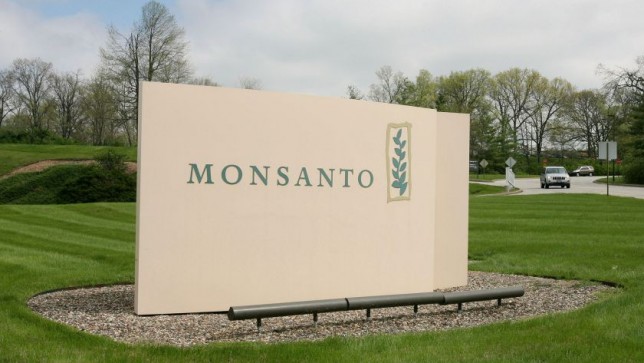The same Monsanto manager, Dr. George Levinskas, who helped hide the carcinogenic potential of PCBs in the 1970s, has now been shown, in California court documents released Tuesday, to have also influenced the U.S. Environmental Protection Agency (EPA) regarding the carcinogenic potential of the World’s most used herbicide – glyphosate – in the 1980s.

In March 2015 Sustainable Pulse uncovered a 30 year cover up by Monsanto and the EPA, related to the probable carcinogenicty of the World’s most used herbicide – glyphosate. This cover up has now been confirmed by court documents released by the U.S. District Court in San Francisco.
U.S. Right to Know (USRTK) reported Wednesday that more than 50 lawsuits against Monsanto Co. are pending in the U.S. District Court in San Francisco, filed by people alleging that exposure to Roundup, a glyphosate-based herbicide, caused them or their loved ones to develop non-Hodgkin lymphoma, and that Monsanto covered up the risks.
On March 13th, U.S. District Judge Vince Chhabria ruled — over Monsanto’s objections — that documents obtained by plaintiffs through discovery could be unsealed.
The documents released are a treasure trove of information on how Monsanto influenced the EPA to change the March 4, 1985 classification of glyphosate as a Class C Carcinogen – showing suggestive potential of carcinogenic potential – to a Class E category which suggests “evidence of non-carcinogenicity for humans” in 1991.
This change in glyphosate’s classification occurred during the same period that Monsanto was developing its first Roundup-Ready (glyphosate-resistant) GM Crops.
Shortly after WHO’s International Agency for Research on Cancer’s (IARC) report on glyphosate confirmed glyphosate probably causes cancer in March 2015, Sustainable Pulse discovered EPA documents from 1991 that showed how a Monsanto funded long-term glyphosate safety study on mice, which suggested carcinogenic potential according to the EPA experts, was ‘reviewed’ again until it mysteriously showed no carcinogenic potential.
The reason for the EPA review leading to the change in classification was unknown until this week. It is now clear however that the EPA was heavily influenced by Monsanto during the re-classification process.
Monsanto’s Cover-Up Man: Dr. George Levinskas
Dr. George Levinskas, who joined Monsanto in 1971 and became Director of Environmental Assessment and Toxicology, was a lead player in the cover up of the carcinogenic potential of the now banned PCBs in the 1970s.
Monsanto began commissioning animal toxicity studies on PCBs in the early 70s; the results did not look good. “Our interpretation is that the PCBs are exhibiting a greater degree of toxicity in this study than we had anticipated,” an executive wrote.
In 1975 a lab submitted its findings from a study using rats. An early draft said that in some cases, PCBs had caused tumors. Dr. Levinskas wrote to the lab’s director: “May we request that the report be amended to say ‘does not appear to be carcinogenic’.” The final report dropped all references to tumors.
The now deceased Dr. Levinskas has now been shown to have also been a lead player in hiding glyphosate’s carcinogenic potential. He wrote an internal company letter in 1985 stating the following: “Senior management at the EPA is reviewing a proposal to classify glyphosate as a class C “possible human carcinogen” because of kidney adenomas in male mice. Dr. Marvin Kuschner will review kidney sections and present his evaluation of them to the EPA in an effort to persuade the agency that the observed tumors are not related to glyphosate.”
The thirty-year glyphosate cancer cover up will go down in history as yet another failure, by the U.S. government, the EPA and worldwide regulators, to put the health of the general public before the need to protect and expand company profits.




















Eye opening stuff….after so many events that show reasons not to trust authority, it’s a small wonder the natives are restless worldwide…
Excellent article. Brings to mind when big tobacco kept denying cigarettes caused cancer and we all know what the results were. Took decades & much litigation for them to own up and pay up. This is a crime against humanity pure and simple. But what is the answer to the problem?
The evidence of corruption and crime related to pesticides and chemicals is not only a crime to humanity but the entire earth and all living things. The damage from genetically modified seeds and pesticides and chemically fertilized agricultural practices in order to make more money has changed how we farm forever and not in a good way. Biotech has embraced this new way of producing food and turned it’s back on enriching soil so that food is nutritional, sustainable practices and farmers who want to grow food the way they want using time tested practices and seed saving to save money. We will be suffering from this influence for generations! God help us!